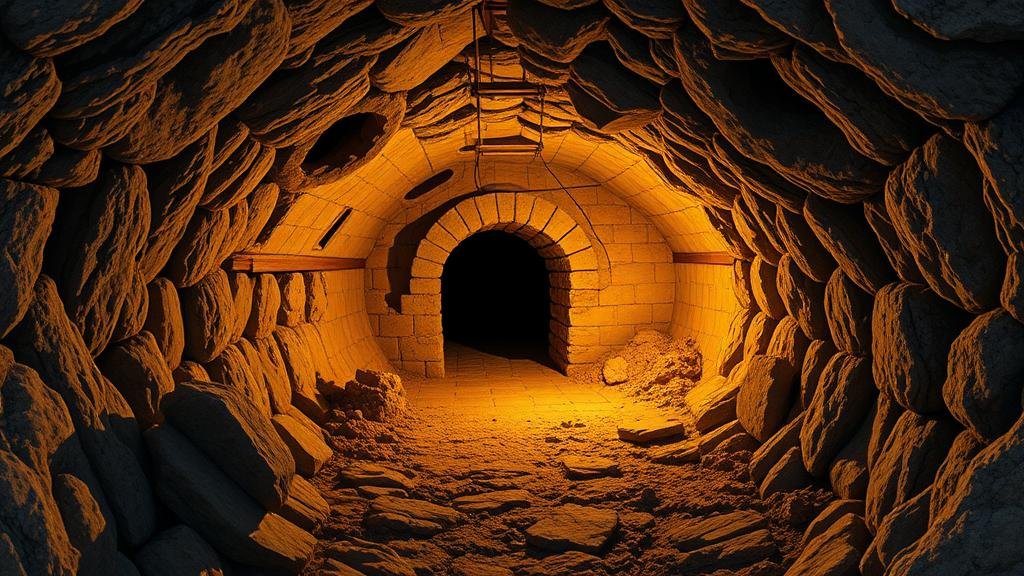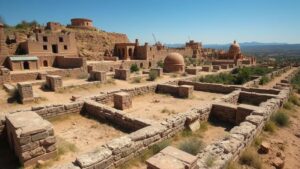Examining the historical records and modern explorations of tunnels rumored to house treasures.
Examining the Historical Records and Modern Explorations of Tunnels Rumored to House Treasures
Treasures buried in tunnels have long fascinated treasure hunters, archaeologists, and historians alike. The allure of undiscovered wealth hidden away in the earth is not only a prospect of financial gain but also an opportunity to unravel historical mysteries. Across the globe, various legends and historical documents point to tunnels said to contain lost treasures. This article delves into notable tunnels, their historical records, and contemporary explorations.
The Legend of Oak Island
Located off the coast of Nova Scotia, Canada, Oak Island is perhaps the most famous treasure site in North America. The story begins in 1795 when a young boy named Daniel McGinnis discovered a depression in the ground while exploring the island. Excited by the prospect of treasure, he enlisted friends to dig and soon unearthed a series of enigmatic structures, including what appeared to be a shaft leading deep underground.
Over the years, numerous excavations have taken place on Oak Island, with varying results. In the early 20th century, a group of investors known as the Onslow Company uncovered wooden planks and stone markings thought to indicate treasure. In 1940, the infamous Money Pit was drilled to depths of around 200 feet, where they found a series of flood tunnels. These tunnels have kept treasure hunters captivated, leading to a staggering investment estimated at over $7 million spent in searches to date. Despite their efforts, the rumored treasure–believed by some to be linked to the likes of Captain Kidd or even the Knights Templar–remains unfound, leaving much speculation in its wake.
The Tunnels of the Catacombs of Paris
Another historical treasure trove, albeit of a different nature, lies beneath the streets of Paris: the Catacombs. Established in the late 18th century, the Catacombs were initially created to alleviate the overcrowding of cemeteries. Over 200 miles of tunnels were carved out, and these underground passages became the final resting place for the remains of approximately six million Parisians.
The Catacombs are steeped in history and art, attracting millions of visitors each year. But, rumors persist that some sections of these tunnels house hidden artifacts and treasures from the French Revolution. During this period, many leaders buried valuable items in secrecy, hoping to safeguard them from looters.
- In 2004, urban explorers found a cinema and a fully equipped restaurant within the tunnels, suggesting the existence of undeclared investments and hidden treasures.
- Evidence suggests that resistance fighters during World War II used the Catacombs for clandestine meetings and stored weapons, adding another layer of historical intrigue to the site.
Modern Explorations and Technologies
As technology advances, so do the methods for exploring these legendary tunnels. Ground-penetrating radar (GPR) is increasingly employed to scan for anomalies within the subterranean layers, allowing explorers to identify potential treasure sites without excavation. For example, GPR was successfully used at Oak Island to locate unexcavated areas of interest without further damaging historical features.
Plus, drone technology has begun assisting in the exploration of previously inaccessible areas, enabling aerial surveys of locations that may house tunnels. This method has been particularly useful in mapping large, ancient sites that are rumored to contain lost treasures, such as the Incan tunnels rumored to exist near Machu Picchu in Peru.
Challenges and Concerns
While the hunt for treasure can be thrilling, it often comes with its own set of challenges. Legal issues are prevalent, as many sites are on private property or classified as historical landmarks, which can impede access to treasure hunters. Plus, the preservation of historical sites must always take precedence. Excavations can be damaging and lead to the loss of important archaeological information.
Environmental factors also play a significant role. Flooding–like that experienced in the Money Pit on Oak Island–can conceal treasures while simultaneously presenting a risk to those daring enough to explore.
Conclusion: The Allure of the Unknown
The tunnels rumored to house treasures are more than just locations of potential wealth; they are gateways to understanding our collective past. Each exploration reinforces the notion that the search for treasure is also a quest for knowledge, history, and the thrill of discovery. While many searches have ended in disappointment, they contribute to the historical narrative, keeping the legends alive.
For aspiring treasure hunters and historians, the following actionable takeaways can enhance one’s exploration:
- Conduct thorough historical research before embarking on an expedition.
- Use modern technology, like ground-penetrating radar, to assist in the search while preserving the integrity of the site.
- Consider legal regulations and engage with local historical societies or officials to ensure responsible exploration.
The tunnels wait, and the treasures remain elusive, but the stories they tell are priceless.



